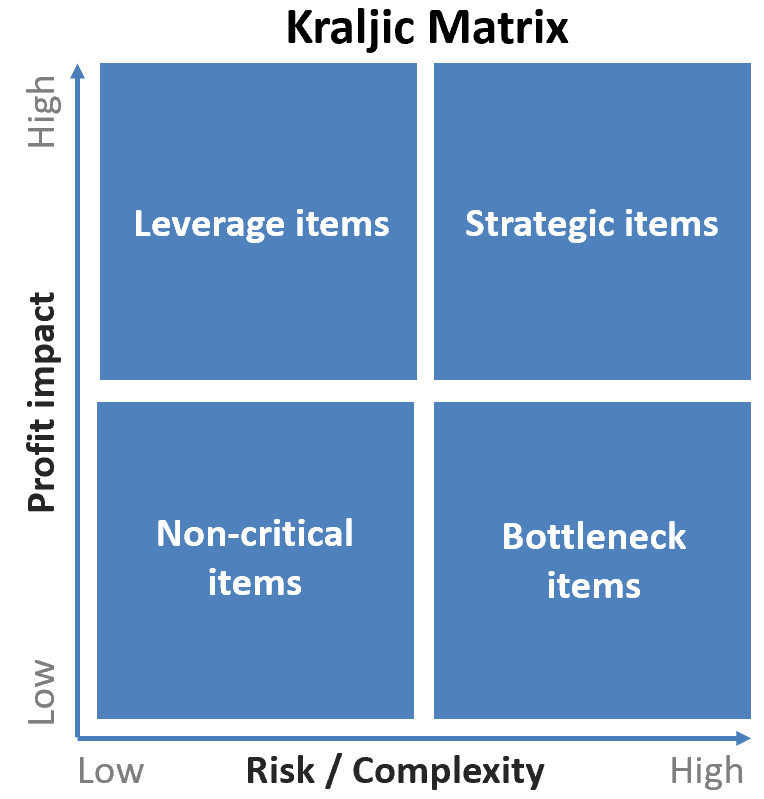Transform Your Vendors into Partners to Enhance the Customer Experience
How you manage vendor relationships may make all the difference in CX. Here are some practical suggestions for how to maintain the right focus in the process.
The acceleration of digital transformation has changed the context in which Service Desks, and IT organizations live. Fast-paced introductions of new technologies that need to be supported, increased outsourcing of services and infrastructure, moving to the cloud - the list keeps growing. Overall, the environment continuously gets more complex, while expectations about customer experience and the need to demonstrate your value continue to rise even faster.
Relying on more vendors means a more significant chunk of the service and value chain is out of your control. Strategic vendor management, therefore, becomes an essential focus to live up to ever-increasing demands and complexities. Let me share some ideas on how to tackle this.
SEGMENT YOUR VENDORS
First, classifying and segmenting your vendors is crucial because not all of them will require strategic vendor management. A good framework to do so is the Kraljic matrix, which divides purchases into four categories of four classes. The segmentation is based on the supply market's complexity and the significance of the assets or vendors, defined by their influence on the company's profitability.

To explain this chart a bit further:
- "Non-critical" items include items like stationary
- "Leverage" items are typically more expensive and have a lot of vendors, like hardware
- "Bottleneck" items can be relatively costly and have few vendors, like mail delivery
- "Strategic" items, like software, have few vendors and are pretty expensive — things provided by vendors that you will probably not easily change.
Using this matrix, you can choose how much time and effort to devote to the vendors. When it comes to non-critical items, it is evident that no one will spend much time with vendors like Staples or OfficeMax since their prices are too low. As a result, their contributions to your organization's value are insufficient. For example, I have never heard anyone claim that premium paperclips or printing paper have significantly impacted their customer experience. Devoting too much time to leverage or bottleneck item vendors will not yield enough benefits and will be too expensive.
On the other hand, the vendors of strategic items are the essential links in your value delivery chain, so it makes sense to devote more time to them—especially given that you are undoubtedly outsourcing more strategic items than ever before. Therefore, you should concentrate your strategic vendor management efforts on these providers.
CHOOSE THE RIGHT STRATEGIC PARTNER.
Selecting strategic partners goes beyond considering factors like pricing, product, and services. Since you intend to develop a relationship with them, the partner you choose should be compatible with your organization, share your interests, and, more importantly, provide a significant value above what you already offer.
Numerous studies have demonstrated the connection between customer and employee experience. Therefore, it is a good idea to go beyond your standard selection and due diligence procedure when choosing a strategic partner or vendor and turn to some less traditional sources. When looking for a new job, potential employees have long been reading reviews on Glassdoor to see what other employees think and experience working at the company. Now, more and more businesses are also using Glassdoor to choose vendors, particularly strategic ones, because they are aware that happy employees will provide more excellent customer service. Richard Branson said it well: "If you take care of your employees, they will take care of the clients."
BUILDING A STRATEGIC PARTNERSHIP
While establishing that strategic relationship, three key elements are agreements, motivation, and freedom. It's where those three come together that we create meaningful partnerships.
Forming a partnership involves more than just concentrating on contracts and penalty provisions; it also involves a shared motivation. Airtight agreements and penalty clauses don't always work best; they can work against you, as I've learned from experience on both sides of the negotiation table. For example, when a customer requests a fixed-price contract, vendors typically include very explicit and extensive conditions that specify what is and is not included. Sounds great at first glance because there are no ambiguities regarding the service quality. However, there is also no flexibility at all in the contract. As a result, both sides lose their freedom, and subsequently, motivation wanes.
Making the strategic vendor an active team member, exchanging information, understanding each other's needs, and achieving shared objectives is a superior strategy. It leaves flexibility so that when your context and priorities change, your partner can and will be motivated to realign with you. In addition, aligning your internal SLAs to your OLAs will go much more smoothly if you have a solid strategic partnership because your vendor will seem more like a team member than an outsider.
With the advent of digital transformation, value and experience have become more critical. Delivering services that meet expectations necessitates a well-connected chain where each link holds equal weight. The customer experience and internal organization are heavily emphasized in many of the chain's components, including business culture, mission, strategy, leadership, and innovation, to name just a few. On the contrary, vendor relationships are often underrecognized, though they are also a crucial link in the chain, especially as we outsource more of our strategic products and services.
Since a chain will only be as strong as its weakest link, we must concentrate more attention and effort on the section concerned with vendor relationships. Turning this relationship into a partnership will be crucial in delivering excellent value and a top-notch customer experience.

)
)
)
)
)
)
)
